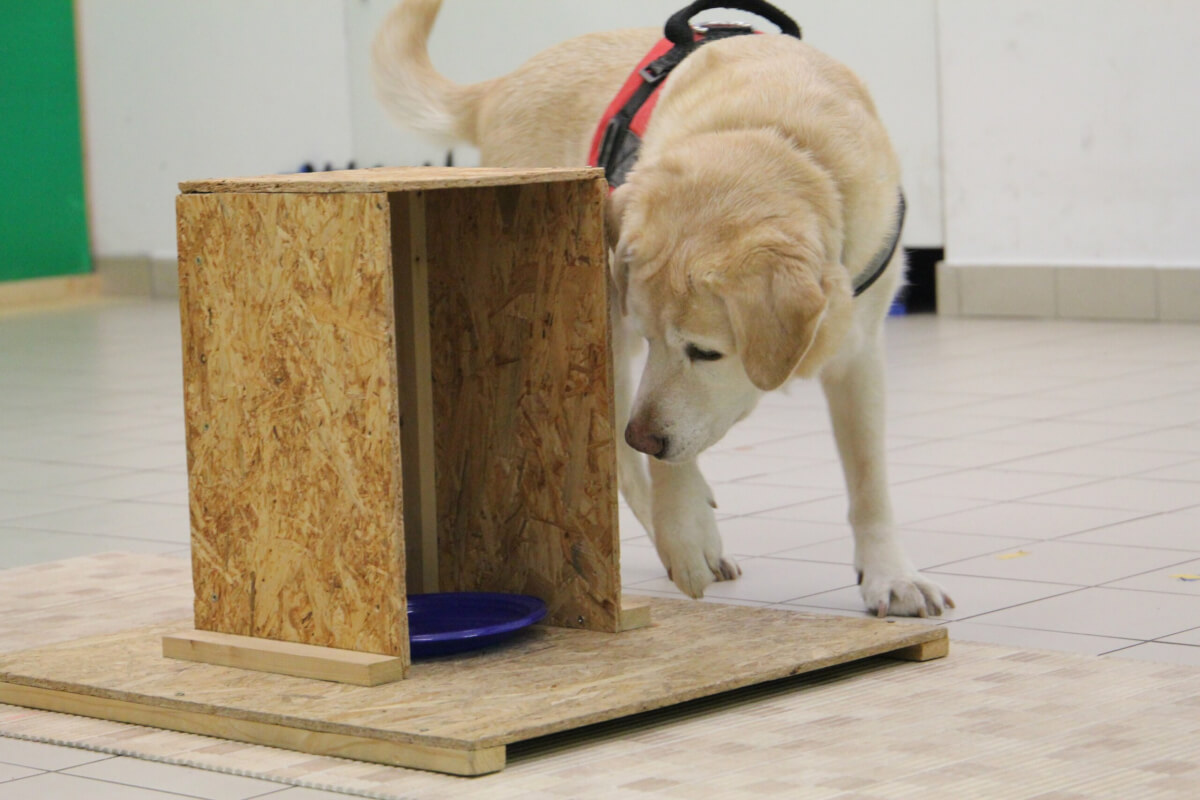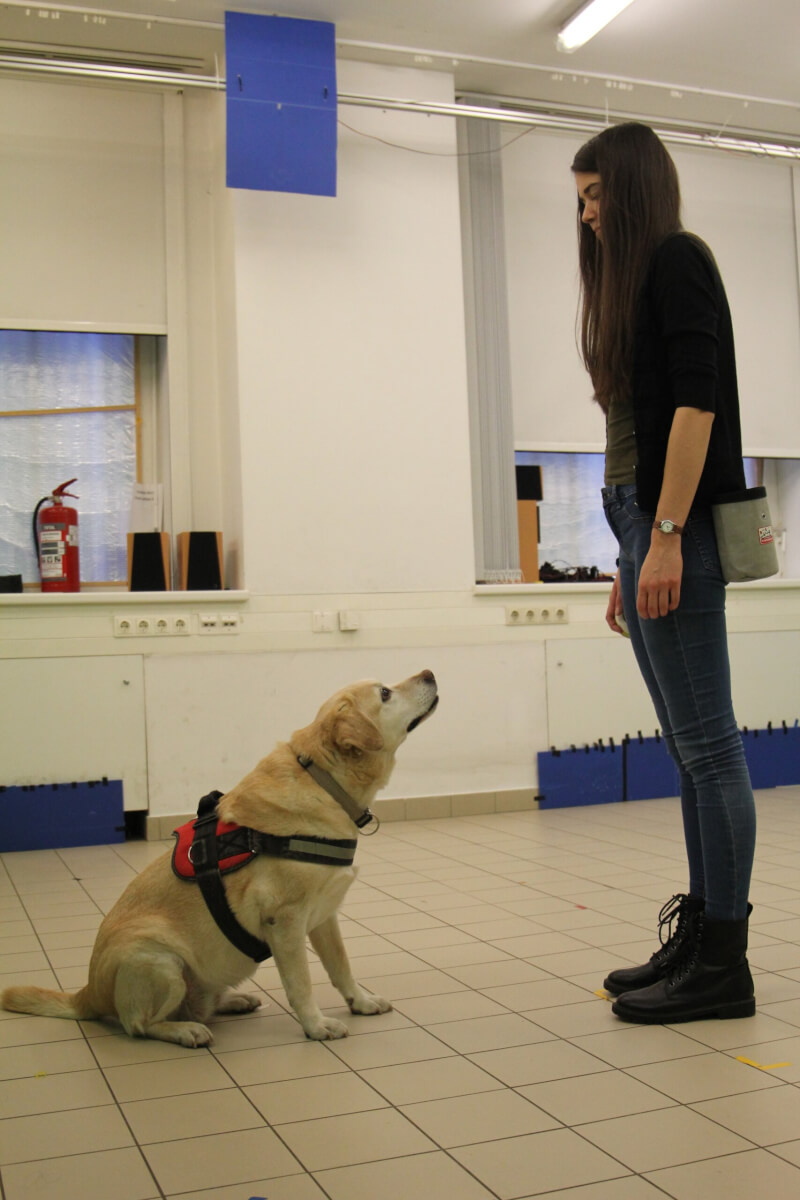Researchers discover a “canine g factor” that mirrors human cognitive abilities and sheds light on age-related cognitive decline
BUDAPEST — Have you ever wondered what goes on inside your dog’s mind? Do our furry best friends possess a form of intelligence similar to humans? A study by researchers at the Department of Ethology at Eötvös Loránd University (ELTE) in Hungary has uncovered fascinating insights into the cognitive abilities of our canine friends, revealing a surprising parallel to human intelligence.
The study, published in the journal GeroScience, identifies a key component of intelligence in dogs known as the general intelligence factor, or “g factor,” which shares many characteristics with its human counterpart. This discovery not only helps us better understand how dogs think and learn but also sheds light on the complexities of cognitive decline in both dogs and humans as they age.
“The cognitive and socio-cognitive performance of dogs is a highly popular topic in scientific literature, yet most studies are comparative, focusing on how well dogs perform as a species,” explains Borbála Turcsán, one of the lead authors of the study, in a media release. “Surprisingly, these studies have largely overlooked the individual differences in specific skills and the reasons behind them. As a result, we know very little about how dogs’ cognitive abilities are structured.”
The human g factor is a concept that emerged from the observation that people who perform well on one type of cognitive test tend to perform well on others. It suggests that there is a common underlying factor that influences an individual’s performance across a wide range of cognitive abilities, such as memory, problem-solving, and learning. The g factor is thought to be a fundamental component of human intelligence and is closely related to various aspects of life success, including academic achievement, job performance, and career advancement.
To delve deeper into the mysteries of canine cognition, the researchers designed a series of seven tasks to assess the cognitive performance of 129 family dogs between three and 15 years-old. Over the course of two and a half years, the researchers tracked the dogs’ performance in these tasks, which ranged from problem-solving and memory tests to associative learning and one-trial learning tests.

What they discovered was a hierarchical structure remarkably similar to that of human cognition. The dogs’ cognitive abilities were organized into two broad domains: Independent problem-solving and Learning ability. These domains were interconnected, suggesting that dogs with better problem-solving skills were also quicker learners, pointing to the existence of a higher-order, general cognitive factor – the “canine g factor.”
However, the researchers didn’t stop there. They wanted to confirm whether this “canine g factor” had predictive power similar to that of the human g factor.
“To confirm that we have indeed identified the general cognitive factor, we examined whether this factor correlates with individual characteristics known from the literature of humans and other animal species to be associated with the ‘g factor,'” says Tamás Faragó, a researcher at the ELTE Department of Ethology.
The results were striking. Dogs with high “g factor” scores were more adventurous, showing greater interest in exploring unfamiliar environments and tackling new challenges. They also exhibited better performance in novel learning situations compared to their lower-scoring counterparts. Moreover, the dogs’ g scores correlated with their personality traits, as assessed by their owners. Dogs with higher g scores were typically more active, had higher training levels, and were more trainable overall.

These findings not only confirm the existence of the “canine g factor” but also highlight its remarkable similarities to the human g factor in both structure and external correlations. Beyond the exciting parallels between canine and human intelligence, this study also opens new avenues for understanding age-related cognitive decline.
“It is well-known that as dogs age, their attention, learning ability, and memory naturally decline. However, if cognitive abilities are interconnected, it’s plausible that their decline with age is not independent but rather linked to a common underlying factor behind the deterioration of various abilities,” emphasized Zsófia Bognár, PhD student and co-lead author of the study.
The assessment of the dogs’ cognitive performance over two and a half years revealed a global cognitive decline, with the “canine g factor” score decreasing with age. Interestingly, this decline was influenced by the dogs’ health status. Dogs in poorer health exhibited a more rapid decline in their g factor scores, while dogs in good health showed no significant change with age.

This finding aligns with research in humans, suggesting that lifestyle factors like diet, exercise, and mental stimulation can help stave off age-related cognitive decline and even dementia. It seems that what’s good for the human brain is also good for the canine one.
“This new research highlights intriguing parallels between human and canine aging, further strengthening the argument that dogs serve as an excellent model species for aging research,” says Enikő Kubinyi, leader of the MTA-ELTE Companion Animal Research Group and the Senior Family Dog Program. “Moreover, our findings support the existence of the ‘canine g factor,’ suggesting that dogs can also help in understanding the evolution and background of human intelligence.”
While these findings are fascinating, the researchers acknowledge that there’s still much to learn about canine cognitive aging. Future studies will need to examine a broader range of cognitive abilities and test larger and more diverse samples of dogs to build a more complete picture.
As we continue to unravel the mysteries of the canine mind, this study serves as a testament to the deep bond we share with our furry friends. It not only reveals the remarkable cognitive abilities of dogs but also highlights their potential to help us better understand our own minds and the challenges we face as we age. So, the next time you look into your dog’s eyes, remember that there’s a lot more going on behind those puppy-dog eyes than you might think!

About 15 years ago I had a dog who figured out how to open a locked chain link gate by bumping it till the U shaped latch pivoted and he could slip out. I used a length of chain and a leash fastiner to keep it from opening. He died from kidney disease before he was very old. Now a dog I found a couple of years ago who never knew him has figured out how to do that on the gate between front and back yard and just a couple of days ago I saw him looking intently at the front gate latch. Luckily I left the other dog’s chain and fastener there. The new guy won’t escape there!